Article purpose
The purpose of the article is to measure the extent to which development and training influence the productivity at private sector sugar mills. Training is seen as one of the most important tools for equipping employees with abilities and knowledge to do their job (Mathur & Agarwal 2276).
Evaluating the work requirements at private sector sugar mills in terms of activities involved in obtaining and maintaining both skills and equipment. Since the abilities of workers directly impact their productivity, the investment in training is seen as crucial.
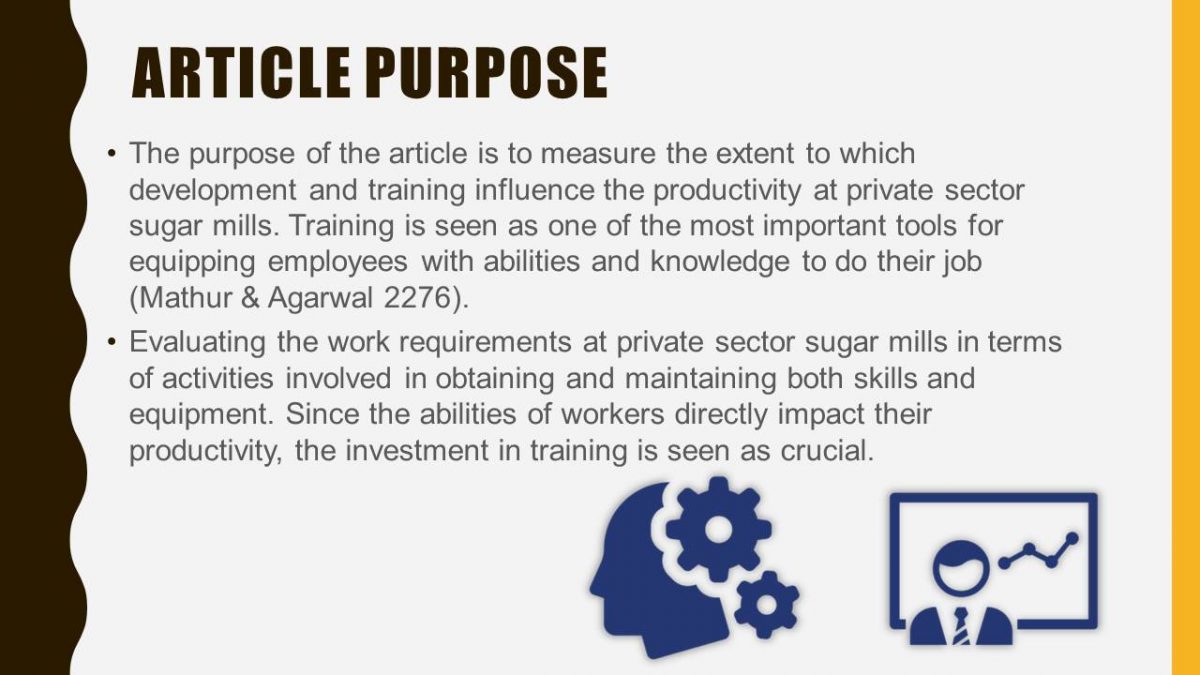
Goal of the article
The primary goal of the article is ensuring the availability of both skilled and willing workforce at organizations.
- Research question I: how can development and training help workers to achieve personal goals?
- Research question II: how training and development enhance the contribution of workers to their organization?
- Research question III: how can departments’ contribution be maintained at suitable to organizations’ levels?
- Research question IV: are companies ethical and socially responsible to their communities? (Mathur & Agarwal 2276).
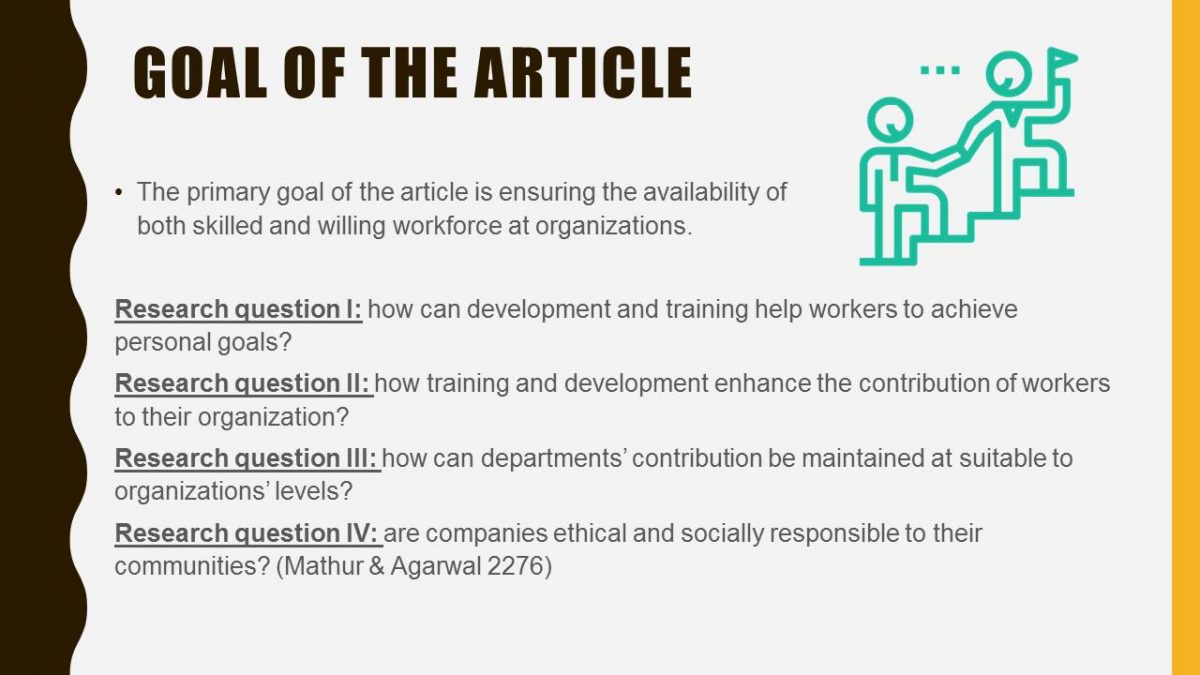
Review of literature
- Training and development represent a framework for helping employees reach both personal and organizational objectives because it incorporates in the interests of people and companies in which they work.
- Employee performance ranges based on different factors, with training being among the most important predictors (Mathur & Agarwal 2276).
- While training is associated with knowledge acquisition for performance improvement, development implies the use of learning opportunities for growth.
- Measuring training and development activities in the workplace is essential for analyzing financial investments, collect feedback, evaluate the HR approach and strategy, and determine the effectiveness of training programs.
- Positive outcomes of appropriate training and development include increased productivity, efficiency, profitability, employee morale, and customer satisfaction.
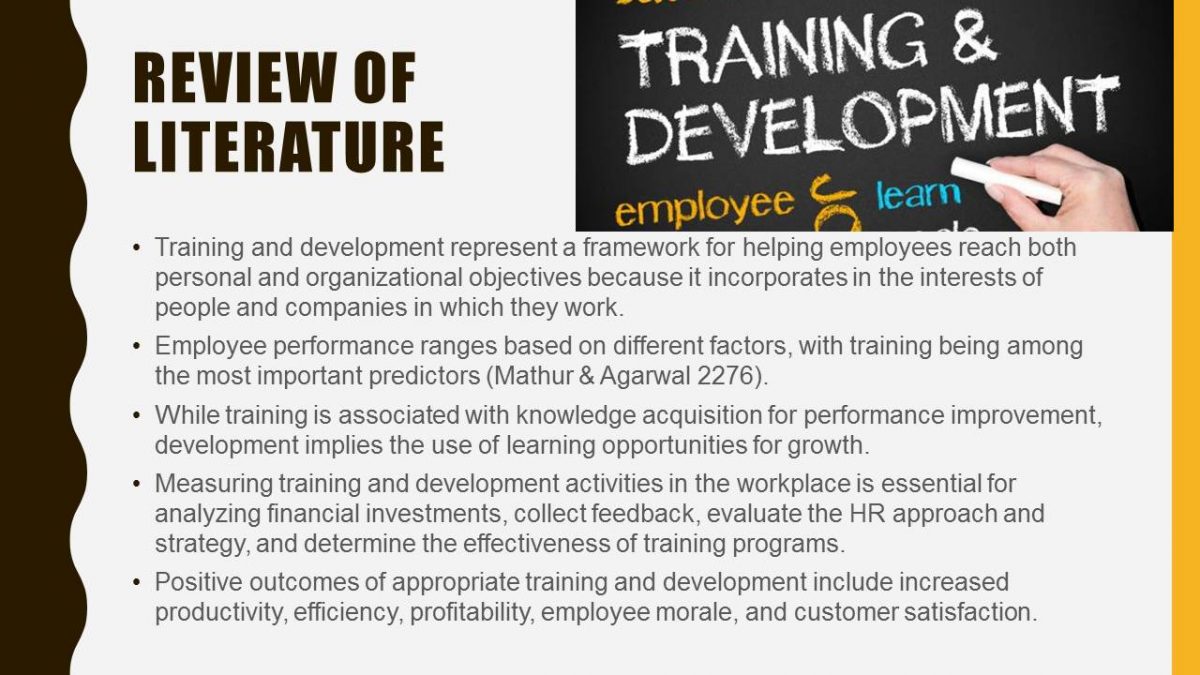
Conceptual Model
- Business environment;
- Challenges and changes;
- Learning and implementation;
- Business excellence.
In the article, training is depicted as a step-by-step model that can bring business excellence to the business environment/
By evaluating the environment, a company can make necessary changes that address the identified challenges.
In the process of implementing changes within an organization, learning occurs, thus improving the previously flawed environment.
Business excellence is achieved when the learning stage brings positive changes to the organization.
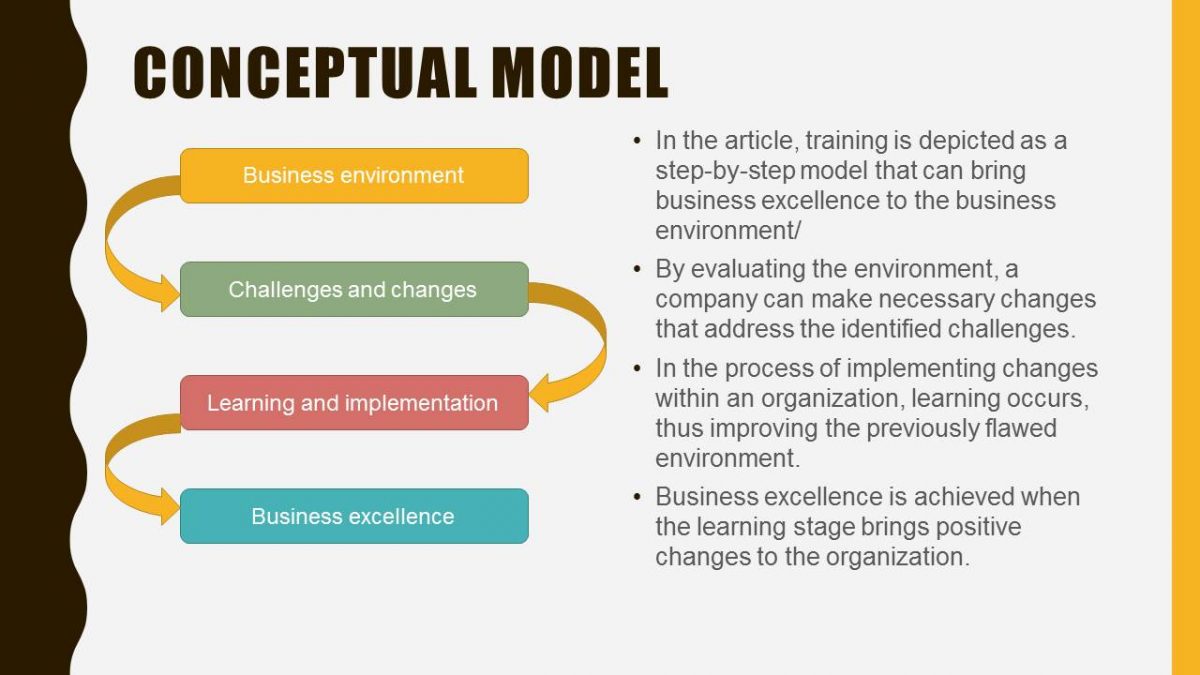
Methodology
A qualitative study that used the synthesis of literature for the development of a conceptual model.
The exploration of existing training and development models to find the most effective strategies, as seen below:
- Level I: Planned action and reactions of employees: “How did employees participate in training?”
- Level II: Learning: “What type of changes have been implemented?”
- Level 3: Behavior: “Did the training change employees behaviors?”
- Level 4: Actual benefits: “Has the training changed organizational results?”
- Level 5: Training cost (return on investment): “Is the training more beneficial than its cost?”
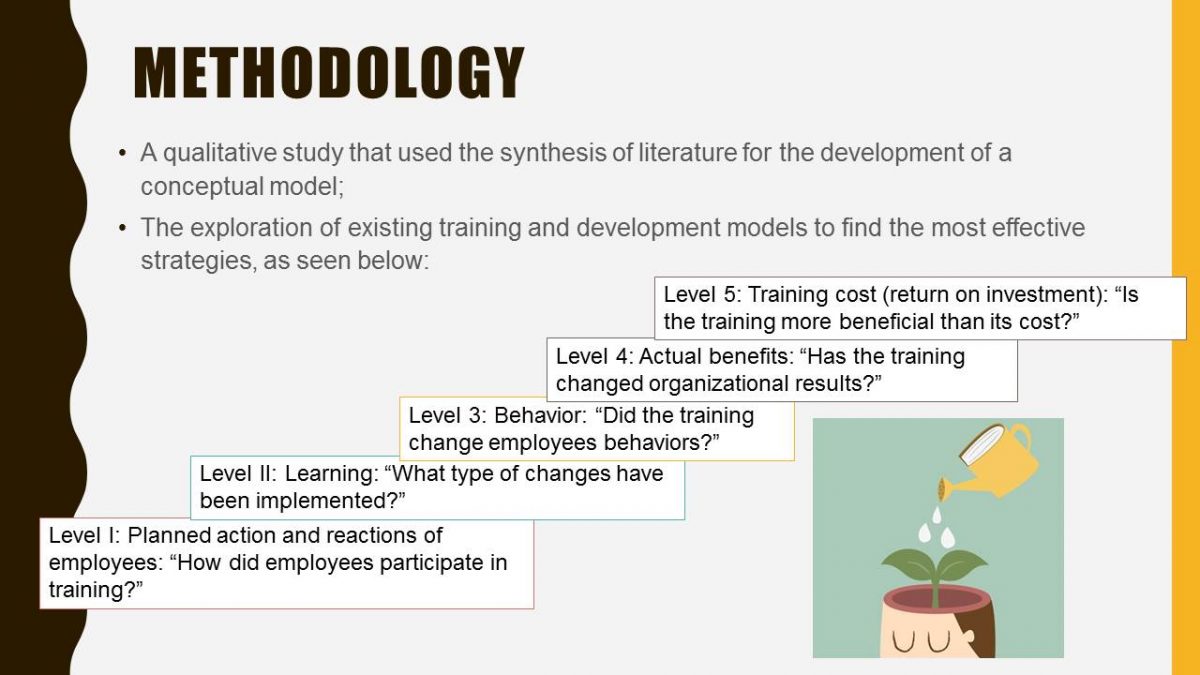
Research Findings
The five levels of evaluation developed by Kirkpatrick and Kraiger were found to be the most effective in the measurement
of employee training and development.
Employee reactions and planned action, learning, behavior, actual benefits, and training cost can show whether the implemented training was enough for ensuring the development of workers.
A set of criteria developed on the basis of the evaluation levels include the identification of industry needs, the setting of goals on system evaluation and data gathering, the definition of the audience, the evaluation of the chosen program, the use of various training and development activities, the creation of a measurement system, the co-relation of business and cultural strategies, the identification of acceptable training and development effectiveness levels, and the discussion of possible barriers.
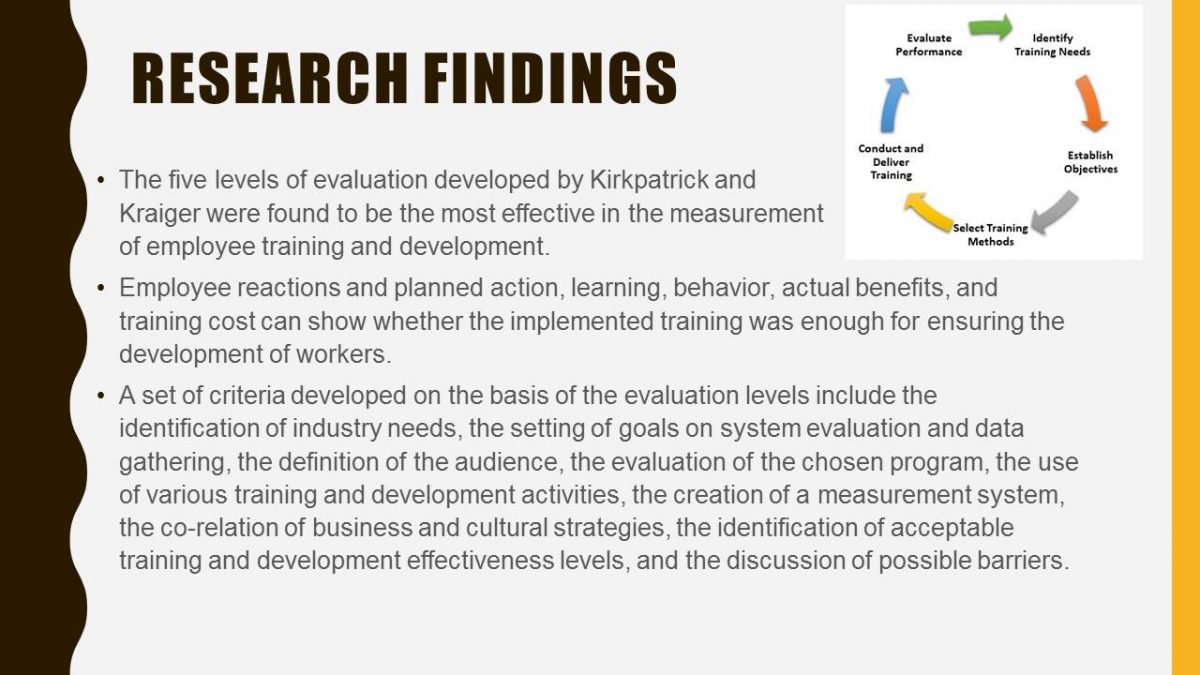
Conclusion
- Mathur and Agarwal provided a framework for the implementation of employee training and development;
- Both methods of improvement can help employees reach personal and professional objectives;
- Companies should invest in training because the return on their costs will imply better performance;
- Additional research on training and development in the workplace is needed to address industries other than sugar mills.
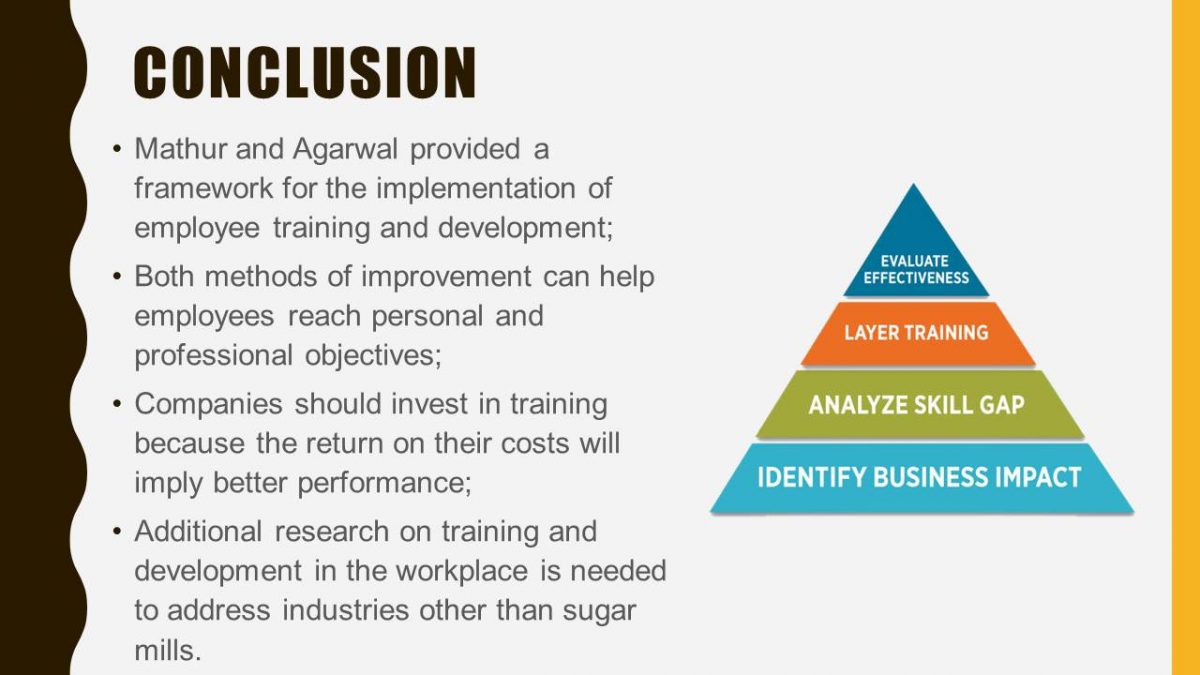
Work cited
Mathur, Atul, and Dr. P. K. Agarwal. “Measuring the Impact of Training and Development in Private Sector Sugar Mills” International Journal of Management Research and Review, vol. 3, no. 1, 2013, pp. 2276-2283.